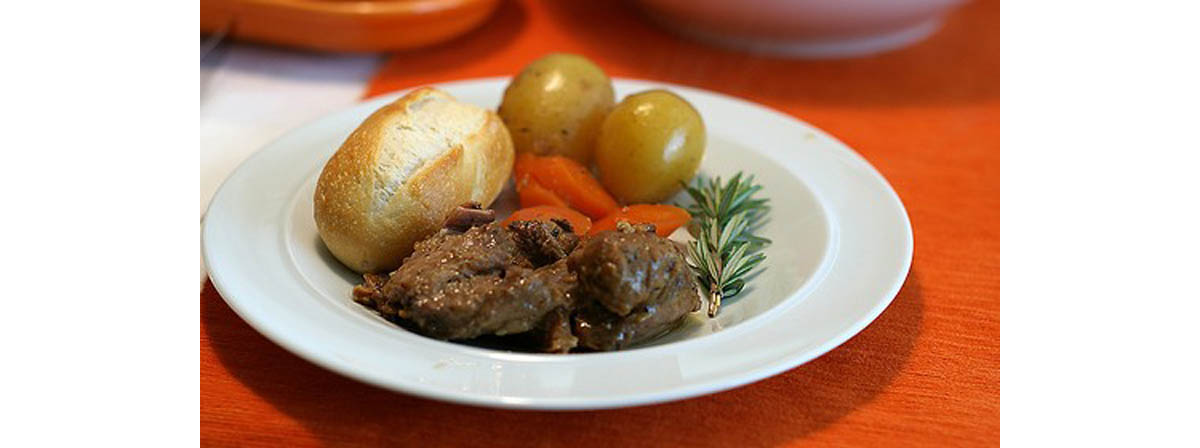Table of Contents
The Okinawans have an expression for when to stop eating, hara hachi bu. Eat until you are just 80% full. But how do you do that?

4. Dish out 20% less than you think you want to eat.
Make a point of serving your own plate, and then dish out about 20% less than you think you would like to eat. Chances are that you will still feel full after you eat. Many eating studies have found that when people eat 30% less than they think they want to eat, they stay hungry, but if they only cut back 20%, they still feel full after a meal. When it comes to fruits and vegetables, however, it is OK to put 20% more on your plate.
5. Don't try to count calories.
Even nutritionists have trouble counting calories. In a famous study conducted at a weight loss clinic in Vienna (Austria), nutritionists put identical portions of identical foods in a calorie-counting device known as a bomb calorimeter. The different portions registered up to 40% differences in calories.
And if nutritionists using instrumentation can't count calories, maybe you can't, either. What people can do is to estimate portion size. We know that we'll be full when we eat a plate of food, and we'll be half full when we half a plate of food. So change the size of the plate, using smaller plates to help you eat less.
6. Soup is good food.
As the Campbell's Soup jingle says, soup is good food, at least if it is slowly simmered soup. Soups that take several hours over low heat to make create gelatinous particles from their various ingredients, and these particles take longer to digest. Soup stays in the stomach longer than other kinds of food, and makes you feel full longer.
Dr. Barbara V. Rolls of Pennsylvania State University and the University of Pennsylvania School of Medicine has conducted over 100 studies that have found that eating soup at the beginning of a meal--any soup with slowly simmered stock--helps diners feel full with 100 to 150 fewer calories during the meal.
7. Take a good look at your food before you eat it.
Dr. Brian Wansink and his collaborators have found that when people pre-plate their entire meal, having a chance to look at everything they are going to eat all at once, they eat about 14% less than when they take smaller amounts and go back for seconds and thirds. Of course, if you are eating a high-calorie food, try to take the smallest portion you'd feel comfortable eating with all the other foods on your plate, and then reduce it about 20%.
8. Take a good look at your food while you are eating it.
Clearing away chicken bones or rib bones or shrimp tails makes it harder for people to realize how much they have eaten, as does refilling glasses. Keeping bones or tails or empties at the table helps you keep count. You wouldn't want to do this at a formal dinner party, but for day to day portion control, keeping everything associated with your meal on the table is a good reminder of how much you are eating.
9. Store food in small packages.
If you want to get a good deal on food, sometimes you have to buy a bigger package (although markets sometimes charge more per unit for products in bigger packages because they are hoping their customers won't actually check the price). However, it's a good idea to store your supermarket bargains in smaller packages once you get home. Why? People use more of products in large packages, whether it is food or shampoo or toothpaste or pet care products. If your goal is to use less, keep products in smaller containers. And make a point of buying 100-calorie servings when they are on sale.
10. Drink beverages from tall, narrow glasses.
Many psychologists write about the horizontal/vertical illusion. People tend to overestimate the height of a glass and to underestimate the width of a glass. It takes 18 to 50% less of a beverage in a tall glass to generate the same satisfaction of the same beverage in a wide glass. Even bartenders tend to overestimate the amount of beverage in a tall glass compared to a wide glass of the same volume. Fatter glass, fatter you.
- Tal A, Wansink B. Fattening fasting: hungry grocery shoppers buy more calories, not more food. JAMA Intern Med. 2013 Jun 24. 173(12):1146-8. doi: 10.1001/jamainternmed.2013.650.
- Wansink, B. Mindless Eating: Why We Eat More Than We Think (Bantam Reprints, 2010).
- Photo courtesy of visitflanders by Flickr : www.flickr.com/photos/visitflanders/5059954406/
- Photo courtesy of Jeremy Noble by Flickr : www.flickr.com/photos/uberculture/2364513599/
- hotword.dictionary.com/starbucks-trenta/
- mindlesseating.org


Your thoughts on this